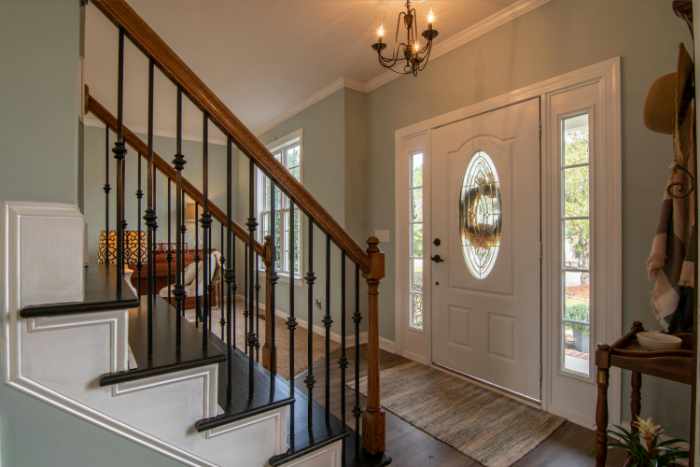House flipping has gained popularity in recent years. But is flipping houses for profit easy? If done right, it can yield substantial returns in a relatively short period. However, it’s not as simple as buying a house, making a few upgrades, and selling it for a profit. Flipping requires a solid understanding of the real estate market, strategic budgeting, and smart renovation choices.

5 Keys to Flipping Houses for Profit
If you’re considering getting started, this guide will help you understand the key steps involved in a successful house flip. From researching the market to selling the property, every stage requires careful planning. Let’s break down what you need to know before diving in.
1. Understanding the Real Estate Market
First on our list of keys to flipping houses for profit is one of knowledge. One of the biggest mistakes beginners make is jumping into a house flip without researching the local market. A property that looks like a great deal won’t necessarily turn into a profitable flip if the location doesn’t have strong demand.
Start by analyzing home sales in the area. Look at recently sold properties and compare their prices to similar homes still on the market. If homes are selling quickly and at competitive prices, it’s a good sign. Pay attention to economic factors like job growth, school ratings, and crime rates, as these influence property values.
Flipping houses successfully starts with choosing the right neighborhood. If home values are declining or demand is low, even a beautifully renovated house may struggle to sell at a profit.
Related: Investment Opportunities: Analyzing Profitable Real Estate Sectors
2. Planning Renovations Wisely
Focus on upgrades that add value and have broad appeal.
Kitchens and bathrooms are the best areas to invest in, as they significantly influence buyer decisions. Updated flooring, modern light fixtures, and fresh paint can also make a big impact without costing a fortune.
Today’s buyers also prioritize energy efficiency. Installing solar panels is one way to increase a home’s appeal and long-term value. If you choose the right solar company, you can add this feature without cutting too deeply into your renovation budget. Many modern buyers appreciate lower utility bills, and this upgrade can make your flip stand out.
Curb appeal matters, too. A well-maintained exterior, fresh landscaping, and a welcoming entryway can create a strong first impression.
Sticking to a timeline is crucial. Delays can increase holding costs, cutting into potential profits. Work with reliable contractors and get multiple estimates before starting the project. Having a clear plan ensures you stay within budget and complete renovations efficiently.
3. Setting a Realistic Budget
A solid financial plan is crucial when flipping houses for profit. Many beginners focus only on the purchase price and renovation costs, but there are additional expenses to consider.
Factor in closing costs, property taxes, and insurance. You’ll also need to budget for permits, contractor fees, and potential holding costs if the property doesn’t sell immediately. Unexpected repairs can arise, so having a financial cushion prevents delays and stress.
Avoid over-improving the home. The goal is to renovate just enough to make it attractive without pricing it out of the local market. If neighboring homes sell for $250,000, it won’t make sense to invest heavily in high-end upgrades and price the property at $350,000.
4. Finding the Right Property to Flip
Not every property is a good candidate for flipping. The ideal home should be priced below market value, need cosmetic updates rather than major structural repairs, and be located in a desirable area.
Distressed properties—such as foreclosures, bank-owned homes, or fixer-uppers—often present the best opportunities. These properties usually require work but can be purchased at a lower cost. However, it’s important to assess the potential return. A house with foundation issues or extensive water damage may require more money and effort than it’s worth.
Look for homes with outdated kitchens, old flooring, or poor curb appeal—these are easier and less expensive to update compared to fixing major structural problems. Also, work with a real estate agent who understands investment properties. They can help you identify homes with profit potential and guide you through the negotiation process.
5. The Selling Strategy: Pricing and Marketing the Flip
Once renovations are complete, it’s time to sell the property. Pricing it correctly is key—overpricing can cause it to sit on the market, while underpricing reduces potential profit. Research comparable home sales in the area to set a competitive price.
Staging the home can make a big difference. A well-staged house helps buyers visualize themselves living in the space. Keep the decor neutral and inviting. High-quality listing photos and a compelling property description also attract more interest.
Marketing the home through multiple channels increases visibility. List it on real estate websites, social media, and work with an experienced real estate agent to maximize exposure.
The Risks of Flipping and How to Avoid Them
Like any investment, flipping houses for profit comes with risks. Market downturns, unexpected repairs, and delays can reduce profitability. Being prepared helps minimize these risks.
Real estate markets can shift, so always have a backup plan. If the property doesn’t sell quickly, consider renting it out until market conditions improve.
A professional inspection before purchasing the property can help identify potential issues. Hidden problems like faulty wiring or plumbing can quickly eat into your budget if you’re not prepared.
Working with trustworthy contractors is also crucial. Poor workmanship or unreliable scheduling can cause significant delays. Always check references and read reviews before hiring professionals.
Flipping houses for profit isn’t just about making quick money—it’s about smart investing. Every project teaches valuable lessons, and the more experience you gain, the better you become at identifying profitable opportunities.
Flipping houses can be a great way to build wealth, but success requires careful planning, market knowledge, and financial discipline. Start with thorough research, set a realistic budget, and choose properties wisely.
Renovate strategically, focus on high-return upgrades, and price the home competitively when it’s time to sell. Expect challenges along the way, but with patience and experience, flipping can be a profitable real estate strategy.
Whether you’re looking for a side income or aiming to make it a full-time career, following these steps can help you navigate the process with confidence. Each flip is a learning experience, and over time, your skills and profits will grow.



